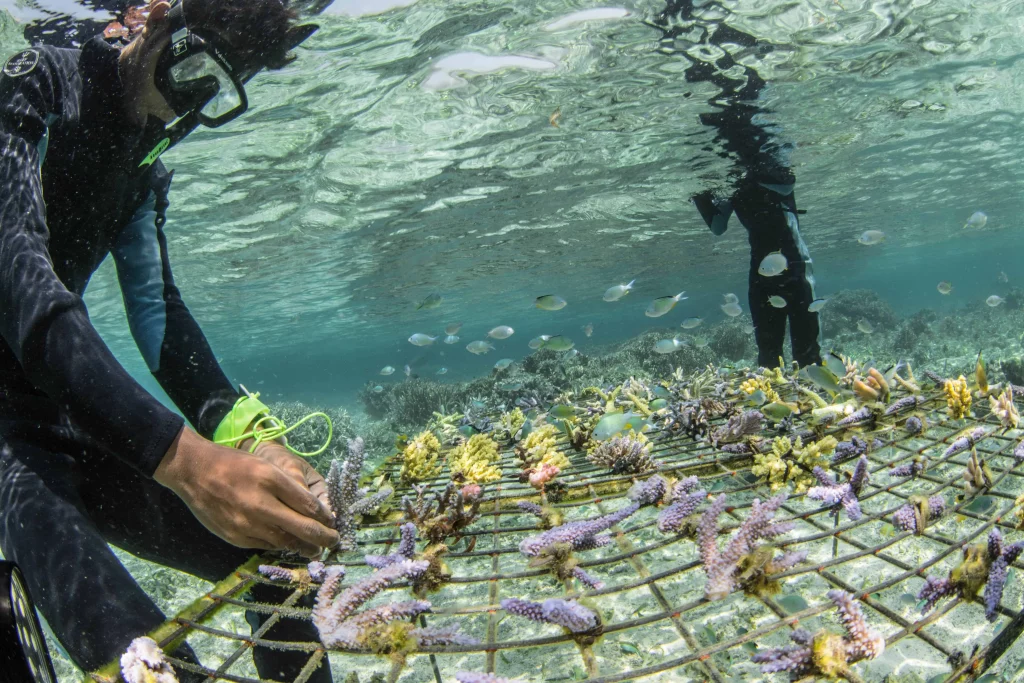
Did you know that coral reefs contribute roughly $10 trillion a year to the global economy? From being spawning and nursery grounds for a vast diversity of marine species to providing millions of jobs to local communities, coral reefs have become invaluable ecosystems that impact people and animals alike.
It’s because of the vital importance coral reefs provide to the planet that there’s an increasing need for restoration efforts to protect them from threats such as ocean warming, acidification, pollution, and invasive species.
How Do You Restore Coral?
Determining which reef coral restoration strategy to use depends on how your targeted corals reproduce. In general, corals are restored using a method called coral gardening.
What is Coral Gardening?
Coral gardening is the process of collecting broken coral fragments or buds that are regrown in land-based or underwater nurseries. Once they’re rehabilitated, the corals are secured onto existing reef areas, or artificial substrates such as limestones, ceramic, or concrete using methods such as straps, glue, or wedges (a process known as transplantation). Assuming the secured area is beneficial for their growth (i.e. minimal pollution, sedimentation, anchor damage), the coral colony will thrive as long as it’s attached.
Coral gardening seeks to fulfill three objectives:
Increasing solid structures needed for coral growth (structural conditions)
Increasing overall coral coverage (biological conditions)
Changing their growing conditions (physical conditions)
Structural Conditioning
Structural conditioning involves constructing artificial reefs/substrates to increase reef structure and available areas for the corals to attach and grow on. This is done in areas where natural, existing reef areas are unavailable or inhabitable.
Biological Conditioning
Biological conditioning involves promoting coral growth (via collecting and rehabilitating coral fragments, propagating coral colonies, and culturing coral larvae) in areas where structures are in place. Fish, clams, and other organisms may also be introduced to promote overall reef recovery.
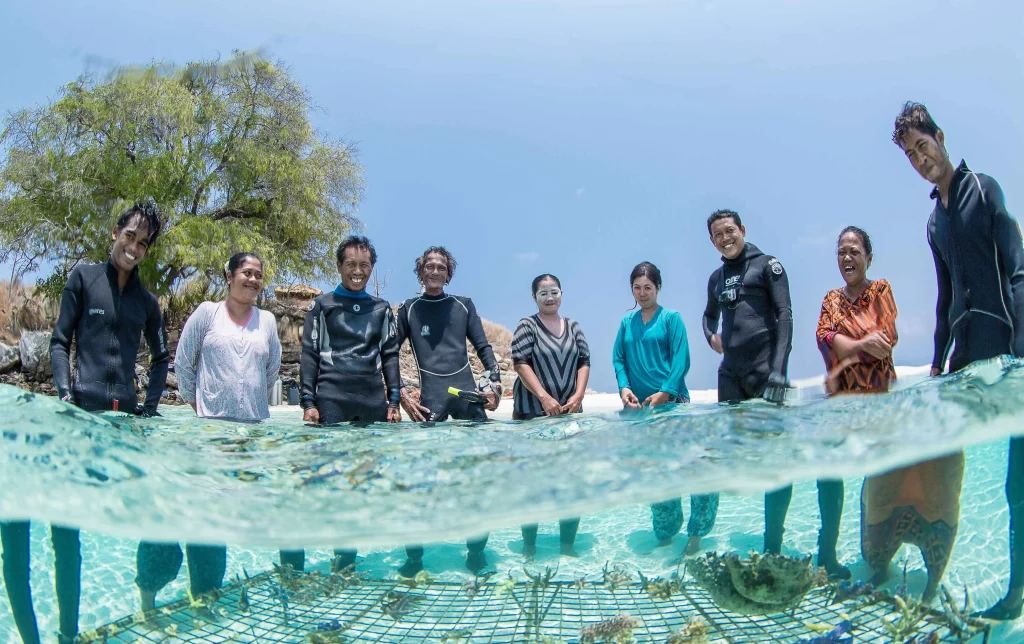
Physical Conditioning
Physical conditioning allows for the efficient growth of corals by changing their environmental conditions to best match their needs. For example, mid-water coral nurseries, where damaged or new corals are rehabilitated before being transplanted to permanent structures, allow corals to thrive and grow faster due to reducing stress conditions while maintaining pristine water quality.
Is Coral Restoration Expensive?
Coral restoration can be a rather costly project; according to a study, the average cost across several projects from 1991 to 2018 amounted to 400,000 USD/hectare, with the average nursery phase costing 6,000 USD/hectare and the average substrate addition costing 4,000,000 USD/hectare.
Costs of restoration projects depend on the scale, location complexity (i.e. whether more artificial substrates are needed), and project type.
The following table shows an idea of the project type, median costs, and minimum and maximum costs (per hectare; they vary widely due to the location).
| Project Type | Median Cost (USD) | Min Cost (USD) | Max Cost (USD) |
| Direct Transplant | 218,305 | 9,198 | 8,382,653 |
| Larval Enhancement | 523,162 | 6,262 | 4,333,826 |
| Coral Gardening (Overall) | 351,661 | 130,000 | 379,139 |
| Gardening (Collection/Nursery) | 28,075 | 9,262 | 56,150 |
| Gardening (Transplant) | 761,864 | 30,835 | 1,492,893 |
| Artificial Substrate Addition | 3,341,754 | 14,076 | 142,667,803 |
| Substrate Stabilization | 370,986 | 91,044 | 26,100,000 |
Expenses vs. Benefits
While these costs vary greatly and historically, it has been difficult to gauge the long-term benefits of coral restorations, recent case studies have shown that certain areas can generate up to an additional 34.6 to 36.7 billion USD between 2017 and 2030 due to improvements in tourism, coastal developments, and commercial fisheries. The public and private sectors are both expected to benefit from such restorations, making them all the more justified.
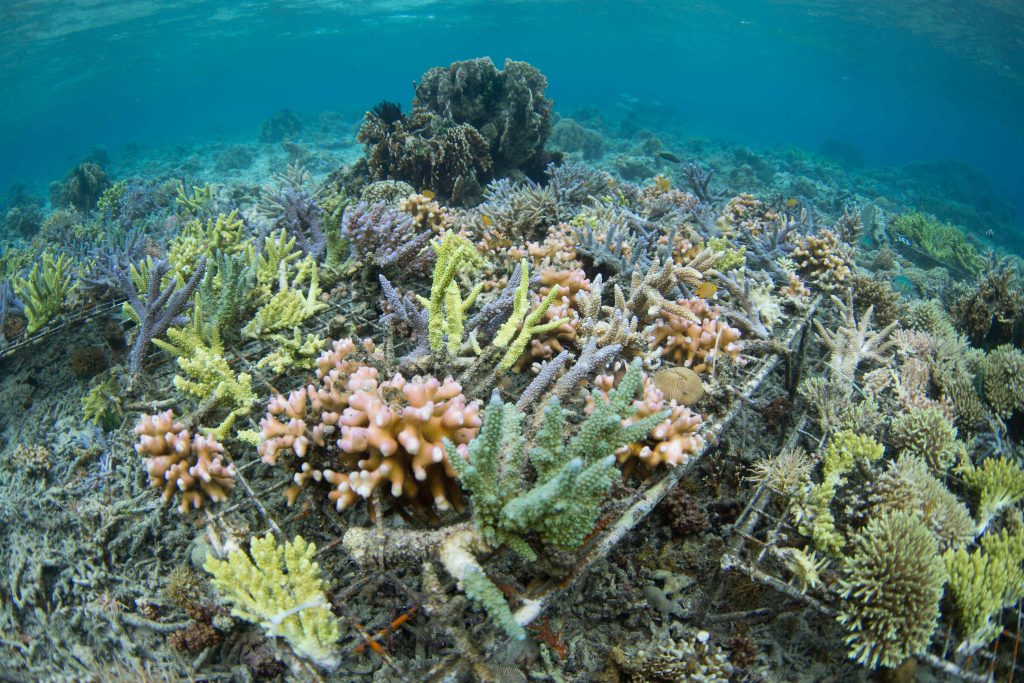
Can Dead Coral Be Revived?
Corals are animals related to jellyfish and anemones and are found in various habitats and locations around the world. Corals are separated into hard and soft corals, with hard ones secreting a calcium carbonate skeleton that helps construct reefs. Soft corals exist within reefs but don’t build them.
Corals coexist with a type of symbiotic food-producing algae called zooxanthellae, which live in the cells of the corals and provide organic matter to their host tissue. The algae produce toxic chemicals during stress, so the corals expel them, causing the corals to eventually die from starvation.
It is possible, however, for bleached corals to recover if they can reclaim their food source (the algae) within a few weeks of bleaching. This usually happens after a heatwave subsides and if no other stressors are present, thus prolonged heatwaves are often detrimental.
A recent case study was done at the coral atoll Kiritimati, where some corals survived a 10-month-long heatwave thanks to a proliferation of heat-tolerant symbionts (algae). These algae allow them to tolerate higher temperatures, but only under the absence of local stressors.
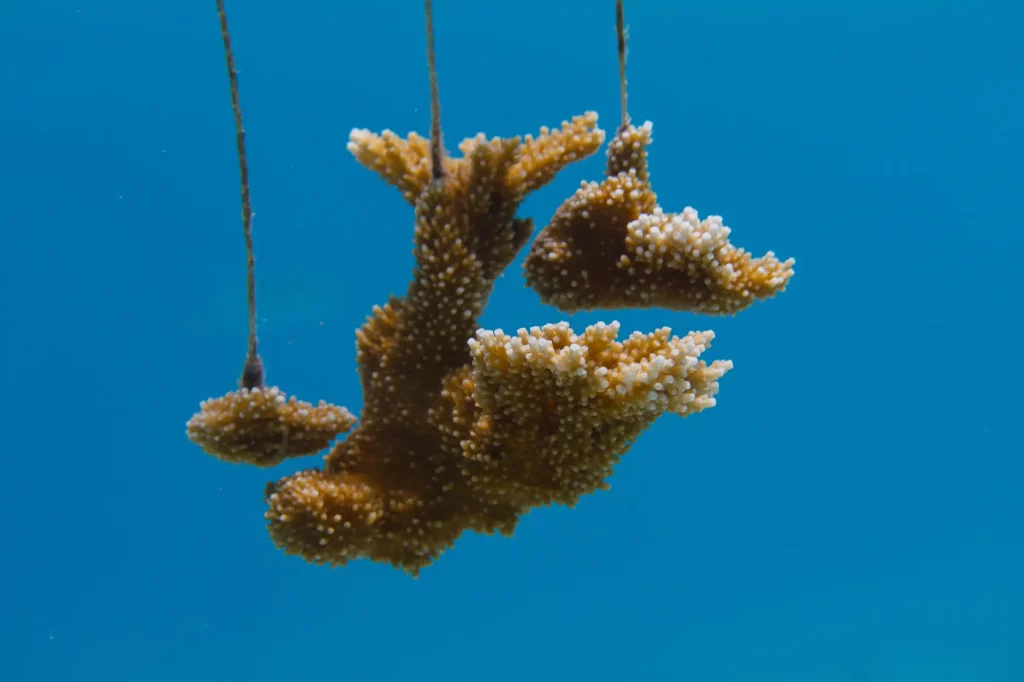
What is an Example of Coral Restoration?
An example of a successful coral restoration project is the Coral Restoration Foundation (CRF) in the Florida Keys. There, researchers grow and outplant endangered coral species in a cost-efficient and scalable manner, allowing the corals to eventually naturally spawn and recover.
Methods and Results
The CRF primarily uses fragmentation (the corals’ method of asexually reproducing from a fragment or piece) to propagate and “farm” corals. The fragments are hung on Coral Trees (PVC designs) that allow researchers to grow them in offshore nurseries.
The Trees are tethered to the ocean floor and buoyed with a float (allowing the tree to move up and down and with storm surges), while up to 100 fragments are hung on the “branches” using monofilament lines.
With sufficient sunlight and nutrients, the fragments grow into colonies large enough to be moved to the reef in 6 to 9 months. Since 2012, over 220,000 colonies have been transferred to Florida’s Coral Reef, restoring over 34,000 square meters of habitat.
Lessons Learned and Best Practices
To ensure the future of healthy coral reefs, the transferred corals are genetically diverse thanks to their world’s largest genetic “bank” of corals, with some genes being unique to the bank as they’re lost in the wild. All genotypes and phenotypes (genetic and physical info) of the corals are analyzed and recorded in a genetic database for future restoration projects.
The CRF’s use of Coral Trees has allowed reefs (with limited assistance) to naturally recover on their own and has influenced scientists across the world to implement the strategy into their own coral recovery efforts.
How Are Coral Reefs Being Restored?
A well-known global initiative in coral reef restoration is the International Coral Reef Initiative (ICRI), a partnership between nations and organizations (mainly NGOs, multilateral development banks, and private sector businesses) worldwide aiming to preserve coral reefs and their associated ecosystems. Its secretariat develops plans of action and organizes meetings, as well as promotes its aims during international summits or conferences.
Restoration is dependent on community and volunteer efforts as well. For example, the previously mentioned CRF invites many recreational divers to observe and record their findings to better help the organization understand how well its Coral Trees are doing.
Techniques Being Used
Common and emerging techniques that are increasingly being used to restore corals include microfragmentation and electro-stimulation via biorock usage.
Microfragmentation: Corals are broken into smaller pieces of 1-5 polyps using a specialized saw. This stimulates growth, allowing the pieces to grow up to 50 times the normal rate. The pieces are placed into shallow water tanks to continue growing and form colonies, which are eventually returned to the ocean or fragmented again.
Electro-stimulation: Low voltage direct currents are run through a steel structure to allow chemical processes to occur and produce solid limestone materials (a process known as Biorock), which are known to be the best hard coral substrate. There is no limit to the shape or size of the limestone. Corals, along with sponges, tunicates, and bivalves are known to grow exceptionally quickly on limestone, with the former also being much more stress-resistant and healing much faster.
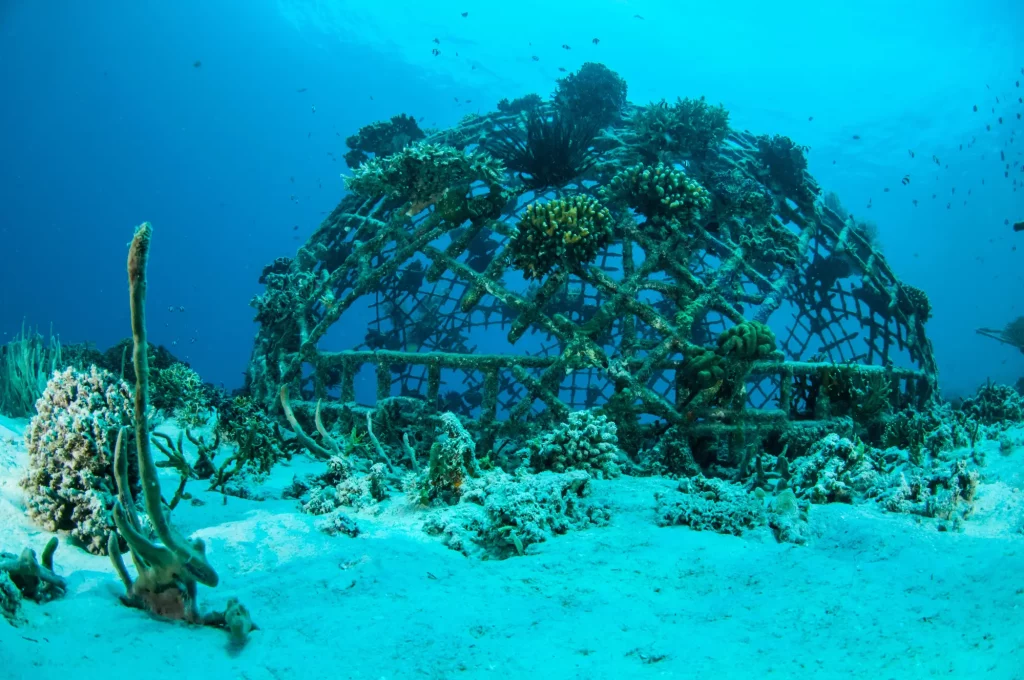
Where Has Coral Reef Restoration Been Most Successful?
Despite the challenges, there have been several successful coral restoration projects that have emerged across the world. Examples include projects in Australia, the Caribbean, and the Maldives.
As recently as 2022, coral nurseries in northern Australia have seen successful spawning events, with over 76,000 pieces of coral being planted on the Great Barrier Reef since 2018. Most work involved collecting coral fragments and growing them in the nurseries before returning them to the reef. The Great Barrier Reef Foundation and the Reef Restoration Foundation collaborate with scientists and tourism operators to ensure successful spawning continues in the future.
The Soneva Foundation Restoration Project looks to restore coral reefs in the Maldives using methods such as Mineral Accretion Technology (MAT) and microfragmentation. The foundation uses the money it receives from charity to produce up to 150,000 coral fragments annually.
The Central Caribbean Marine Institute, a marine research institute in the Caribbean, has consistently refined its coral nursery methods to propagate over 1000 coral fragments via two nurseries. They have also expanded to over 15 coral trees, each capable of holding 100 fragments. They conduct research into improving reefs’ natural adaptation strategies, with their work published in handbooks and available to institutes worldwide. Much of their funding comes from foundations and trusts.
How Long Does it Take to Rebuild Coral Reefs?
10 years is the short answer.
Natural massive corals grow roughly 0.3 to 2 cm per year while branching corals grow up to 10 cm per year. A single coral reef can take up to 10,000 years to form from larvae, while barrier reefs and atolls can take up to 30,000,000 years.
Coral restoration projects can allow transplanted corals to grow at the same rate as natural corals in 4 years, meaning it can take overall less time than natural corals, which take roughly a decade to recover after a bleaching event.
The type of coral, environmental conditions, and restoration method all influence a coral’s growth rate. And naturally, they will be significantly impacted if bleaching were to reoccur.
Current Projects’ Timeframes
Recent studies have demonstrated the rates of coral reef recovery after restoration efforts.
One example from Indonesia’s Mars Coral Reef Restoration Program showed how restored reefs grew at the speed of healthy reefs 4 years after transplantation.
Another example was a FEMA recovery assignment from NOAA that recovered roughly 7,000 fragments after Hurricane Matthew and stabilized them in reef crevices. Healthy corals with a survival rate of 90% were observed after 3 years.
Is Coral Reef Restoration Expensive?
Coral reef restoration can certainly be a costly venture, but long-term studies have shown that the benefits should outweigh the costs in much of the world through areas like tourism and recreation jobs and businesses and fisheries, which depend much on reefs and their habitats (estimated commercial value of US fisheries from reefs is over 100 million USD).
Another indirect economic benefit of reefs is that they protect coastlines as a buffer against waves, storms, and floods. Without them, property damage and erosion can cost millions, not to mention the potential loss of life.
Coral reef restoration projects are often funded by government and private grants (i.e. NOAA Coral Reef Conservation Program), foundations, trusts, and charities. People are most likely to contribute if they see coral reefs as an economic commodity for the reasons mentioned earlier.
Final Thoughts
Coral reef restoration is a proven feasible venture that benefits people and animals alike. With all the benefits already shown in successful restoration programs, there’s all the more reason for people to get involved whether in research, funding, or community action.
Knowing that restoration programs truly work to help achieve a sustainable world through coral reefs, there’s no better time to get involved now.
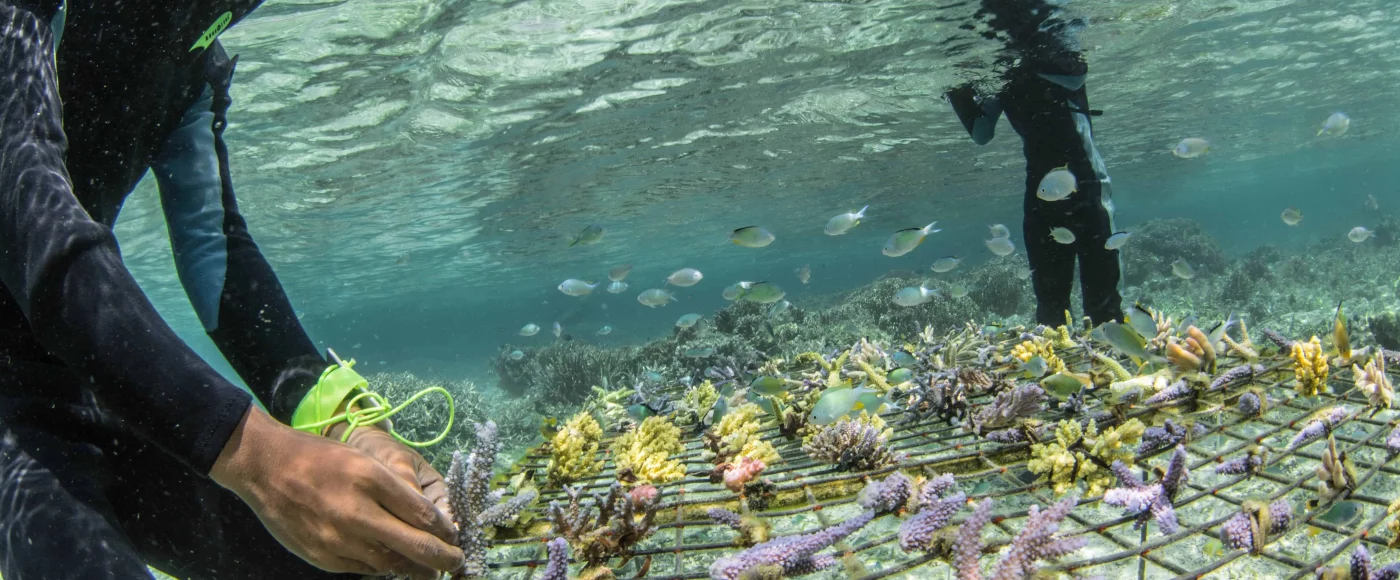
1 thought on “Coral Reef Restoration FAQs: Addressing the Most Pressing Concerns”
Comments are closed.